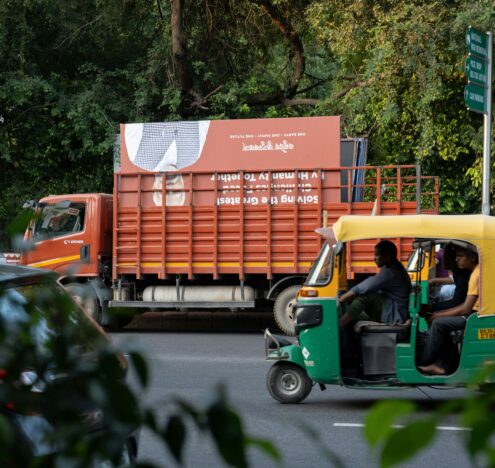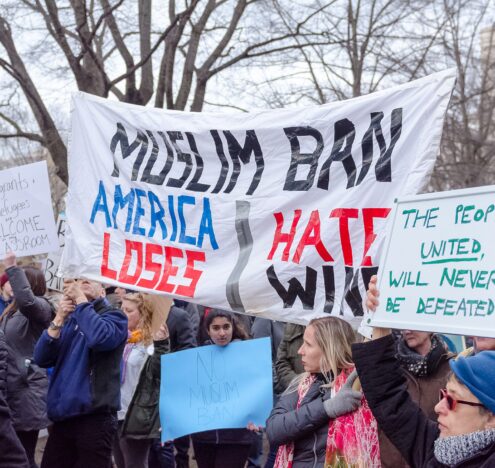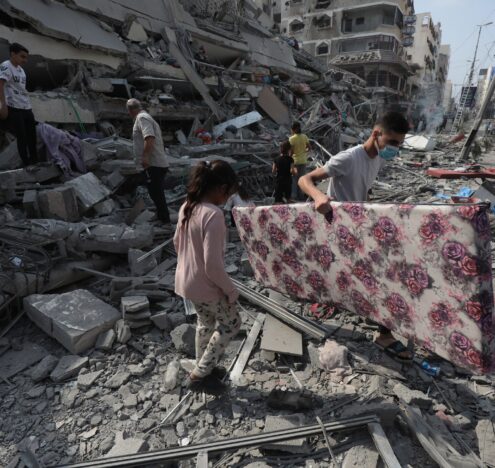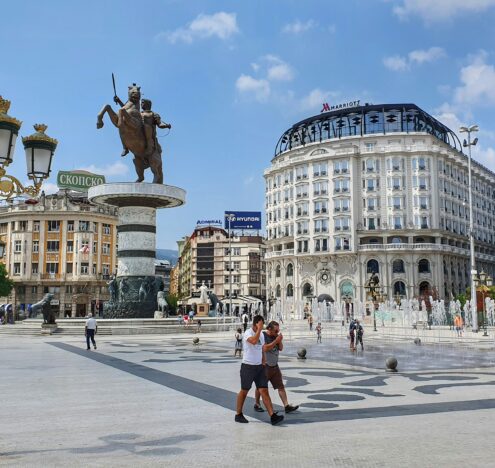This analysis was featured in Critical State, a weekly newsletter from Inkstick Media and The World. Subscribe here.
Last week on Deep Dive, we looked at new research on whether insurgents can force governments to take the blame for deadly insurgent attacks against civilians during wartime. This week, we’ll look at the processes for assigning blame when the origins of the disaster in question are much more diffuse.
One of the most difficult challenges in communicating the urgency of the climate crisis is in getting people to make the connection between extreme weather events and climate change caused by human actions. We know that increasing global temperatures make extreme weather events more frequent and more damaging, but it is difficult to establish how much responsibility climate change bears for any particular hurricane or drought. Even once scientists have established a measure of the climate change effect on a given weather event, however, the next obstacle to overcome is to get non-scientists to take the attribution seriously and support policies aimed at fighting climate change and making such weather events less likely.
Scientists have made some progress on the first part of the problem. Using advanced models of what weather patterns would look like had there been less greenhouse gas emissions, climatologists can now offer estimates of how much more likely human emissions have made any given weather event. There is even a network of climatologists working in a group called World Weather Attribution, making estimates of how climate change contributed to various major weather events. According to their research, the heat wave in Siberia last year was made 600 times more likely by human greenhouse gas emissions.
One of the most difficult challenges in communicating the urgency of the climate crisis is in getting people to make the connection between extreme weather events and climate change caused by human actions.
Since we’re focusing on the politics of how blame gets distributed, however, we’ll be looking this week at new research on the second part of the problem: getting people to believe that climate change is a major contributing factor to extreme weather events. Oxford University researchers Joshua Ettinger, Peter Walton, James Painter, Shannon Osaka, and Friederike Otto took on that question in a new article in the journal Weather, Climate, and Society. Drawing on work from groups like World Weather Attribution, they investigated how presenting attribution findings in different ways affected people’s perception of the veracity of the attributions.
To get the most in-depth responses to attribution findings, Ettinger et al. went small with their research design. They held focus groups, no larger than four people, to create environments where every participant could offer their full views about different ways to talk about climate change’s role in extreme weather. The participants all reported high levels of concern about climate change before the focus groups. Their responses to the presentations, however, varied based on how attribution results were described.
Some of the results of the focus groups reflected truisms of Madison Avenue: People prefer plain language to scientific jargon, and they understand attributions presenting climate change as making events “x times more likely” more than attributions expressed in percentages.
More surprising, however, was the enthusiasm participants professed for the counterfactual framings of the attributions. When the researchers presented climate change as having made a given event more likely compared to an alternate world in which humans released less greenhouse gases, most participants found the comparison persuasive and some even found it uplifting. One participant reported that the idea of an alternate world “that’s healthy and thriving” suggested that something had been lost to climate change and perhaps could be recovered. By talking about how conditions could have been different in the present, the counterfactual approach goads people into thinking about how things could be different in the future, and how our decisions today could affect future outcomes. The participants in the focus groups were already willing to blame extreme weather on anthropogenic climate change before the study, but the method of assigning blame inspired them to think more about possible responses.




















